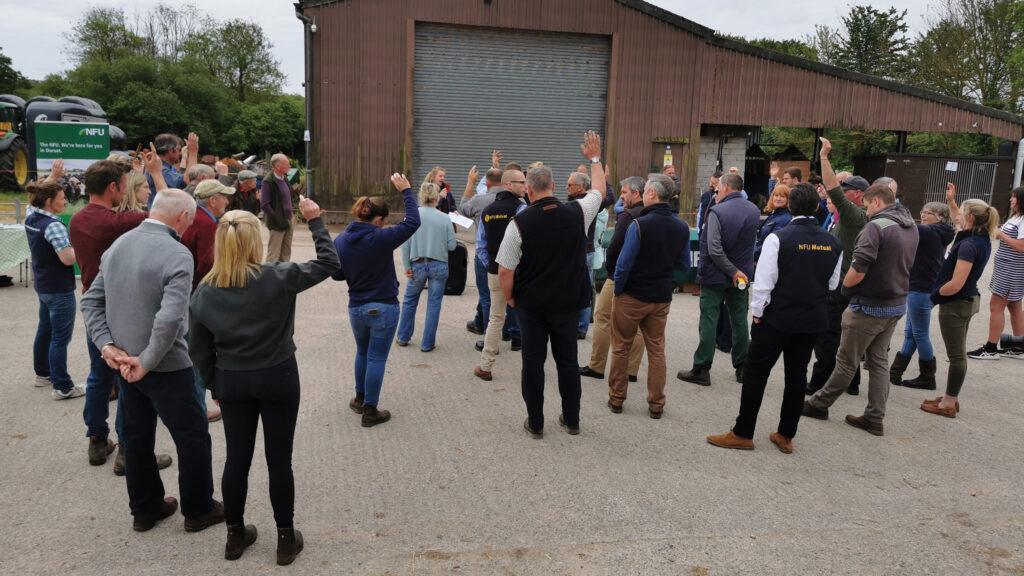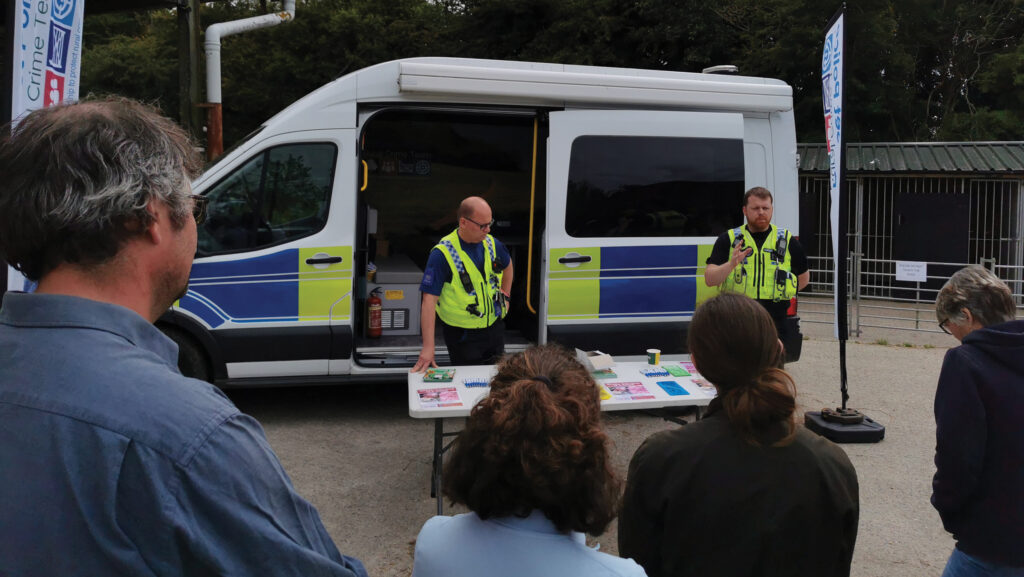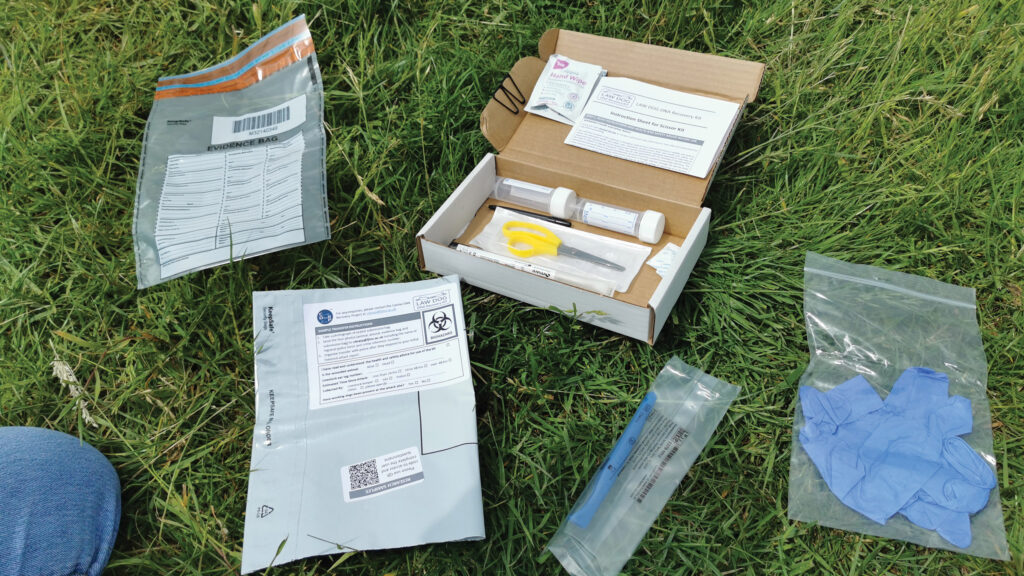Video: Dorset farmers join forces to tackle deadly dog attacks
 © MAG/Philip Case
© MAG/Philip Case Livestock worrying poses a significant ongoing threat to farmers across the UK, but latest figures show the South West is the worst-affected region.
Farm animals worth about £2.4m were severely injured or killed in dog attacks last year, up almost 30% year on year, according to rural insurer NFU Mutual.
The South West was the worst-hit region by cost (£359,000), followed by the Midlands (£331,000).
See more: What to do if you’re a victim of… sheep worrying
Farmers in Dorset say dog attacks on sheep and cattle are a constant issue, with many NFU members reporting an alarming rise in incidents in the county.
These attacks cause immense distress to farm animals, while farmer victims also suffer significant financial losses and emotional trauma.
On top of immediate costs, such as veterinary fees and disposing of fallen stock, ongoing costs include the potential loss of meat or milk from animals, abortions and the loss of progeny.
About 60 farmers and industry stakeholders recently attended an event at Bhompston Farm in Dorchester, which is run by the Wakely family, to learn more about ways to prevent dog attacks on their land and how to manage them if the worst happens.
Sponsored by NFU Mutual, the event was co-hosted by Synergy Farm Health, NFU Dorset and the National Sheep Association (NSA).
Officers from Dorset Police’s rural crime team were on hand to offer farmers advice on what to do when faced with an attack, and a forensic scientist gave an update on farmers trialling DNA test kits for attacked livestock.
A display of about 40 photos of sheep that had either been seriously injured or killed following dog attacks laid bare the devastating impact of livestock worrying.
Emily Gascoigne, a sheep farmer and specialist sheep vet at Synergy Farm Health, asked livestock owners to raise their hands if they had suffered a dog attack in the past 18 months. Almost all did.
She then asked farmers to indicate if they had reported the attacks to the police, which saw about half lower their hands.
She said just 14 livestock worrying incidents were reported to Dorset Police’s rural crime team in 2023-24, including an incident on her own farm (See panel “Lessons learned from serious dog attack near Swanage”).
Mrs Gascoigne stressed the need for farmers to report all livestock worrying incidents to the police to help them gather evidence and build a true picture of the scale of attacks, so that more resources can be allocated.
Watch the video below for further advice on how to prevent and deal with dog attacks.
Dog ownership boom
NFU Dorset county adviser Gemma Harvey said the rise in dog ownership since Covid and owners not training their dogs properly and failing to keep them under control around livestock is responsible for an increase in attacks.
But farmers are engaging with dog owners to encourage responsible dog behaviour around livestock.
“Generic signage has been around a long time, but we’re seeing farmers and landowners create their own signs,” Ms Harvey explained.
“Some have been putting up pictures of some really horrific attacks that have happened to shock the public to show them that this is what their dog could do.
“Some owners don’t believe it, but it’s about farmers being able to have that conversation and engage with the public and try to help them recognise the impact of a dog attack on their livestock.”
Sheep farmer Tim White farms about 800 ewes on the Wiltshire/Dorset borders in various locations.
The most common message he hears from dog owners is that their pets would never worry sheep. But he said all breeds are capable of carrying out attacks on livestock and these were “getting worse”..
“I get about three attacks a year that I know of and I’m sure there are other worrying incidents which I’m not aware of,” he added.
Mr White uses social media to tell the public where his livestock are located, including posts to local groups on Facebook to let the public know field locations where sheep are being kept.
“I let people know where I’ve got my sheep out and ask owners to keep their pets on a lead in these areas. I ask people to call me if they see a problem. That really seems to work,” he said.
He also takes time to thank locals for keeping their dogs on a lead.

© MAG/Philip Case
Police advice
PC Sebastian Haggett, of Dorset Police’s rural crime team, advised farmers to display clear signage, especially near footpaths, informing dog walkers about livestock in fields and the need to keep their pets under control at all times.
“Make sure there is signage at field entrances saying, ‘There is livestock in this field, please put your dog on a lead,’ he said.
Effective signage can be sourced from farming organisations, including the NFU, NFU Mutual, NSA or police forces. Farmers can also make their own signs.
Asked what farmers should do if they find dogs attacking their livestock in fields, PC Haggett said: “The first thing they should do is call 999 and explain there is an offence in progress.
“If we have a unit available, we would be looking to dispatch it.
“Ask the owner to get the dog under control. Once the dog is under control, ask for that person’s details. We need these in order to progress the offence.”
By law, farmers can shoot dogs that are an immediate danger to their livestock, if there is no other “reasonable” option.
But shooting a dog should be a last resort, say the NSA and Dorset Police.
The advice for dealing with the aftermath of a dog attack is different.
“If you come into your field and find a number of deceased or injured livestock, that is also a criminal offence,” said PC Haggett.
“Because it’s not in progress, we would ask that you report it on Dorset Police’s website (or the corresponding police force’s website in your region).
“Make sure you take pictures of the animals and their injuries.
“Record everything. If you call out a vet, record how much costs are incurred because if we do take the matter to court, or deal with it out of court, we would be seeking compensation for the farmer.”
Legislative update
Under current laws, the owner in charge of a dog which worries livestock can be fined up to £1,000 in England and Wales.
In Scotland, the same offence could receive a fine of up to £40,000, or 12 months in prison.
Last month, a private members’ bill which gives police greater powers to crack down on livestock worrying in England and Wales, passed the committee stage in the House of Commons.
The Dogs (Protection of Livestock) (Amendment) Bill aims to amend the Dogs (Protection of Livestock) Act 1953 to give police powers to seize dogs after serious incidents, greater powers of entry, and the ability to take evidence samples from livestock and dogs to assist investigations.
The bill, which was tabled by Conservative former Defra secretary Therese Coffey, also proposes unlimited fines for a person convicted of a livestock worrying offence.
It has received widespread support from cross-party MPs.
Chris Loder, Conservative candidate for West Dorset, who attended the Bhompston Farm event, said: “The bill is there to really turn up the dial on penalties to discourage people from being neglectful with their dogs in fields.”
The bill has passed through the Commons and is now with the House of Lords.
However, because a general election has been called and parliament has been dissolved, MPs would like the bill to be part of a “wash-up” to be fast-tracked to come into law after royal assent.
Mr Loder urged all candidates standing in the election to support the bill.

© MAG/Philip Case
Dog DNA testing
Forensic scientist Dr Nick Dawnay is leading a research project at Liverpool John Moores University to improve the collection of dog DNA from attacked livestock.
He held workshops at the Dorchester farm event to show farmers how to use early evidence kits to collect canine DNA samples from crime scenes, which can be stored and used in prosecutions.
Trials will be carried out this summer in 10 regions of England and Wales, involving farmers, police, the NSA, NFU Mutual and the Farmers’ Union of Wales.
Researchers want to demonstrate that the kits work and they hope to find a market for them before they can be introduced commercially in the next few years.
Case study: Lessons learned from serious dog attack near Swanage

© Synergy Farm Health
Sheep farmer and vet Emily Gascoigne suffered a serious dog attack last May by two large dogs in a field with tupping ewes.
A neighbour alerted her to the attack. When she arrived on the scene, the dog owner had fled without making any contact.
Mrs Gascoigne made two phone calls – one to Dorset Police and the second to her veterinary practice to get another vet on the road.
“It was paralysing as a farmer, especially in this scenario where the offender had left,” she said. “You have to deal with the consequences of somebody else’s making.”
Mrs Gascoigne said her main concern was the welfare of the sheep.
Having a veterinary colleague on the scene was useful to get a second opinion on the injured animals, including whether they were salvageable or needed to be euthanised.
One ewe was given advanced pain relief and surgical intervention and it healed very well because it was dealt with so promptly.
Her colleague took photos of the injuries and included a ruler to give an idea of the scale of the damage caused.
DNA samples from the animals were also taken as soon as possible. Both were later stored for use as evidence.
Although the case ended up in court, it was dropped by the Crown Prosecution Service because the DNA sample could not be linked conclusively to the suspect dogs.
